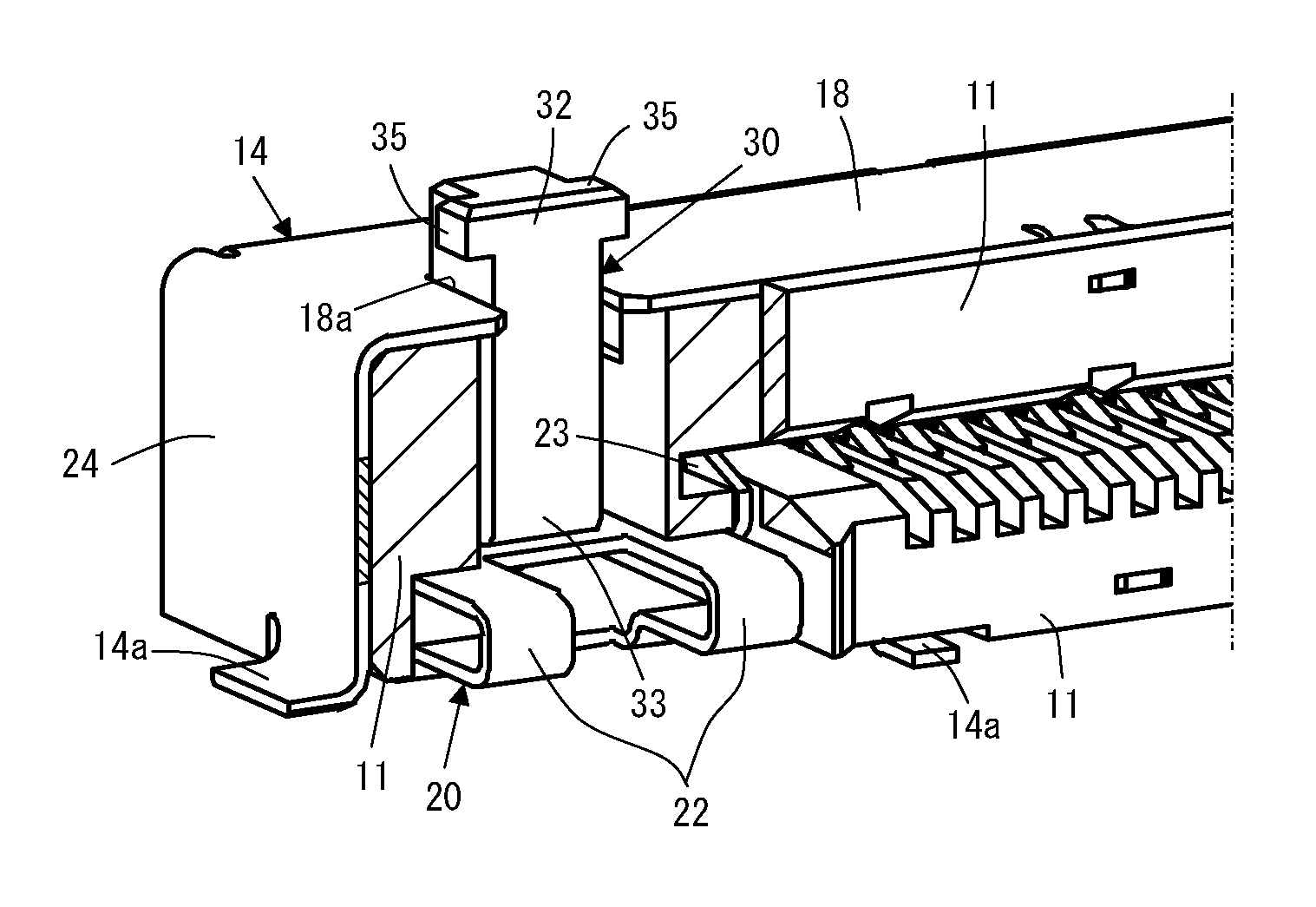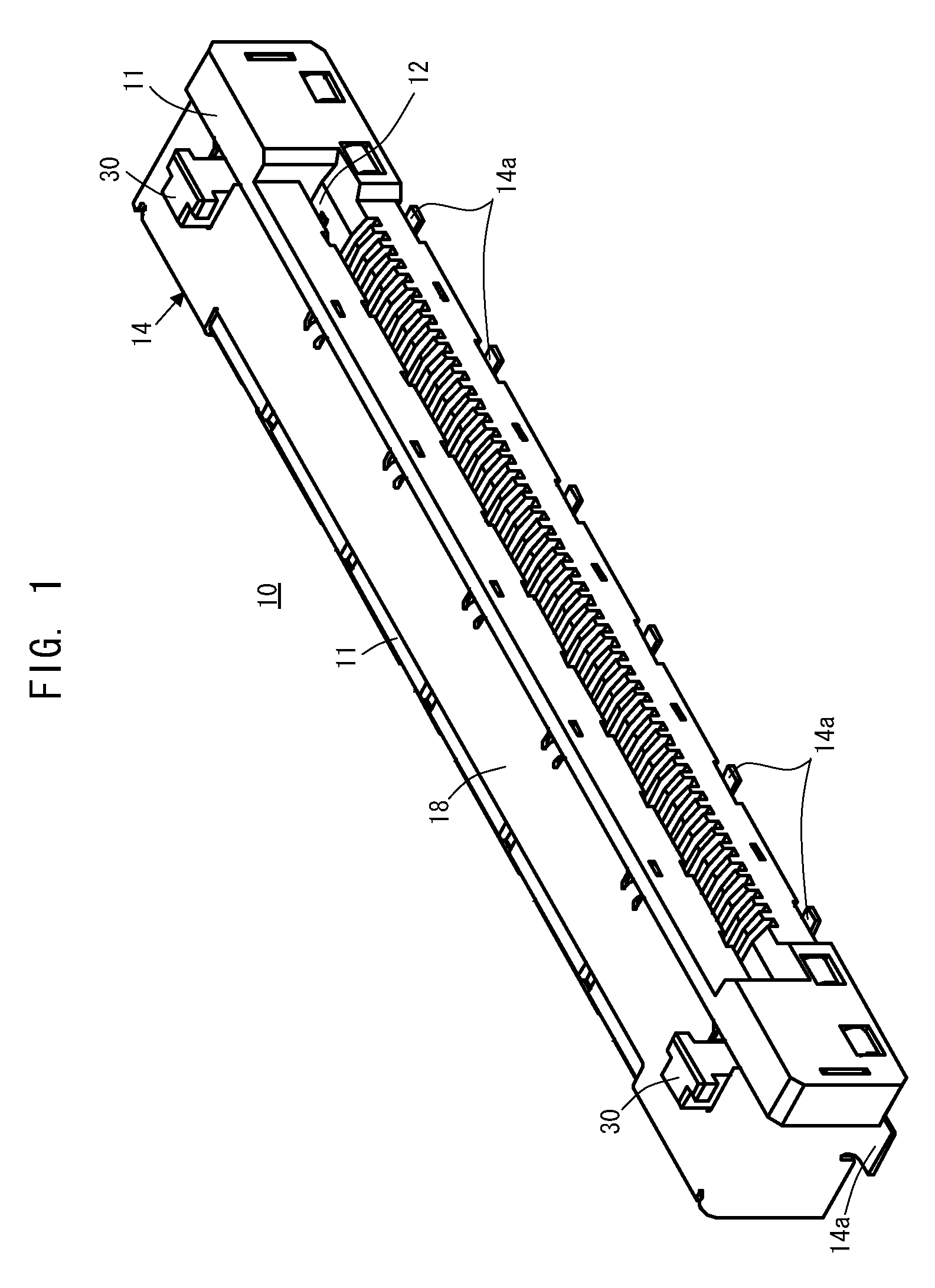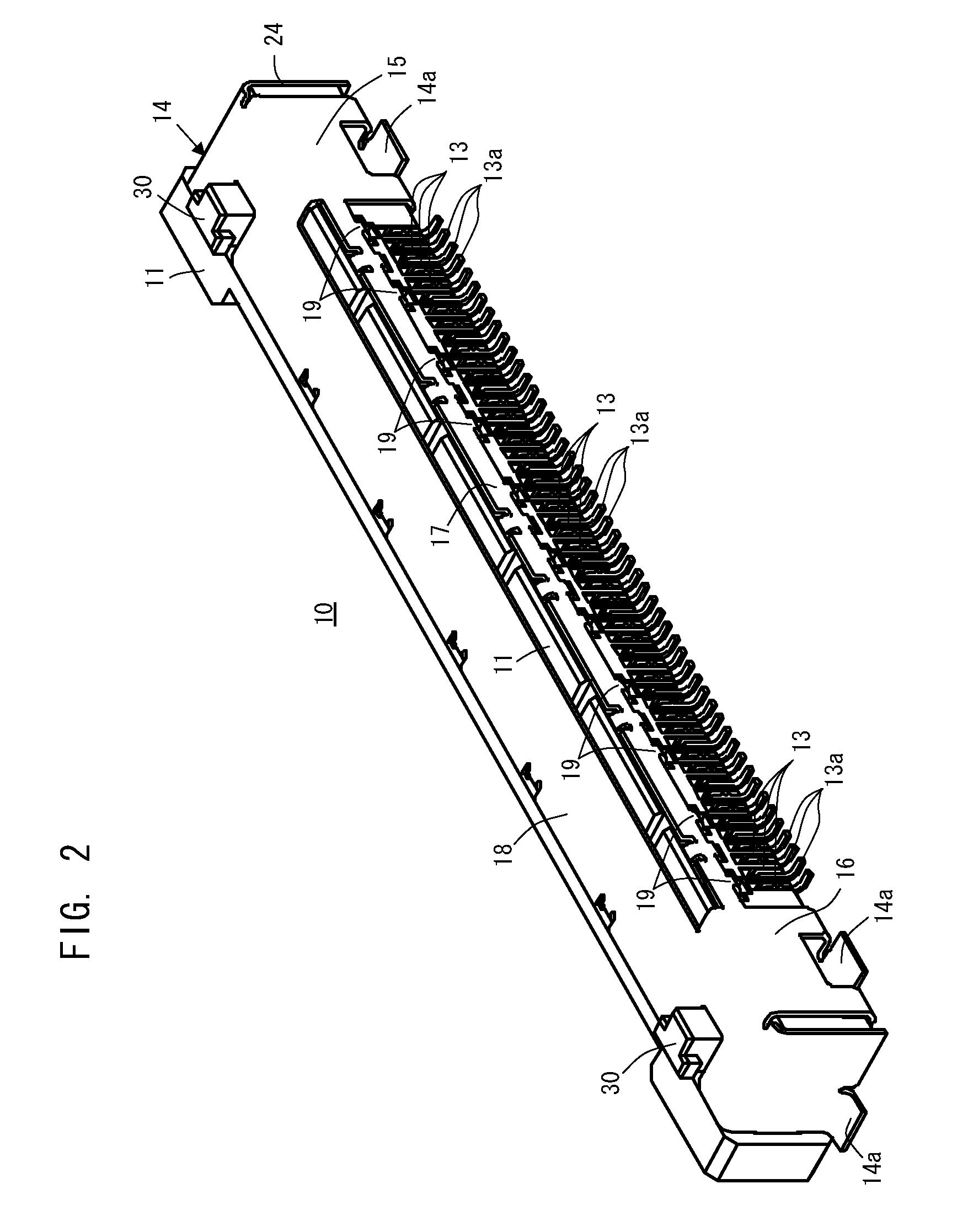Electrical connector
- Summary
- Abstract
- Description
- Claims
- Application Information
AI Technical Summary
Benefits of technology
Problems solved by technology
Method used
Image
Examples
Embodiment Construction
[0057]Each of FIG. 1 which is a schematic front, top and left side perspective view, FIG. 2 which is a schematic rear, top and left side perspective view and FIG. 3 which is a front view, shows an embodiment of electrical connector according to the present invention.
[0058]Referring to FIGS. 1 to 3, an electrical connector 10, which constitutes the embodiment of electrical connector according to the present invention, has a housing 11 made of insulator, such as plastics or the like. The housing 11 is provided in a front end portion thereof with an opening 12 through which a flat circuit device, such as an FPC, is inserted into the housing 11 and a room extending in the housing 11 from the opening 12 for accommodating the flat circuit device inserted in the housing 11.
[0059]When the electrical connector 10 is put in practical use for mounting, for example, an FPC constituting the flat circuit device on a solid circuit board in an electronic apparatus (not shown in the drawings), the h...
PUM
 Login to View More
Login to View More Abstract
Description
Claims
Application Information
 Login to View More
Login to View More - R&D
- Intellectual Property
- Life Sciences
- Materials
- Tech Scout
- Unparalleled Data Quality
- Higher Quality Content
- 60% Fewer Hallucinations
Browse by: Latest US Patents, China's latest patents, Technical Efficacy Thesaurus, Application Domain, Technology Topic, Popular Technical Reports.
© 2025 PatSnap. All rights reserved.Legal|Privacy policy|Modern Slavery Act Transparency Statement|Sitemap|About US| Contact US: help@patsnap.com



